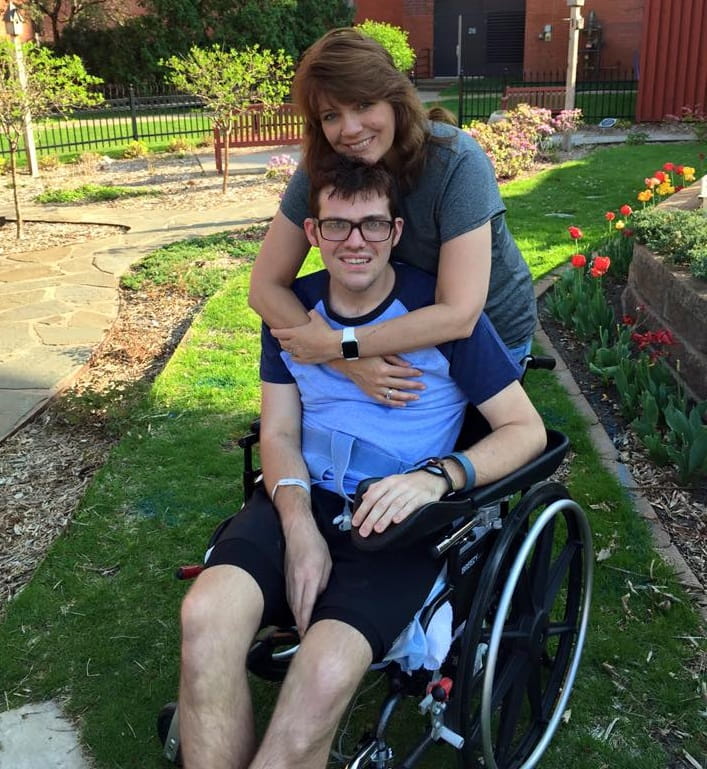22-year-old runs race 3 months after severe stroke
By American Heart Association News

Christian England-Sullivan reminds his special education students that he knows what it’s like to have to overcome challenges. In fact, he relied on some of the same therapy tools used in the classroom while undergoing rehabilitation after a severe stroke three years ago left him unable to walk or speak.
“I wasn’t ready for that to be my life, and that motivated me every day to do more to get stronger,” he said.
A few steps into an early morning run on April 15, 2015, England-Sullivan said he suddenly felt a strange sensation, “like my cerebellum was shaking.”
Actually, the then-22-year-old student from Duluth, Minnesota, was having an ischemic stroke. It was about 5:30 a.m. and the street was empty, so England-Sullivan pulled himself up and stumbled to the entry of his apartment building before collapsing again. About an hour later, he was discovered by a security guard, who called an ambulance.
At the hospital, England-Sullivan was given clot-busting medication, and then sent by helicopter to a stroke center in St. Paul, where doctors performed a procedure to remove the blood clot in his brain using a special tool that travels through a blood vessel.
The stroke occurred in England-Sullivan’s brainstem, which in some cases can cause locked-in syndrome, a condition in which survivors can move only their eyes. Restoring blood flow quickly is paramount to minimize damage, and doctors cautioned England-Sullivan’s family that even after the clot was removed, his life could be significantly altered.
After waking up a couple days later, England-Sullivan was unable to speak or move the left side of his body.
“My emotions were all over the place and I couldn’t stop bawling,” he said.

Stroke affects nearly 800,000 Americans each year and is a leading cause of serious long-term disability for adults.
Although rehabilitation is one of the most important treatment approaches during the recovery period, many survivors do not receive the level and amount of rehabilitation services needed to maximize their gains.
National Rehab Awareness Week is Sept. 16-22, and the American Heart Association and American Stroke Association’s Together to End Stroke initiative raises awareness that stroke is largely beatable through high-quality rehabilitation, patient support and implementation of the AHA/ASA’s stroke rehabilitation and recovery guidelines.
“Intensity of rehabilitation therapy matters,” said neurologist Dr. Larry B. Goldstein, the Ruth L. Works Professor and chairman for the department of neurology and co-director for the Kentucky Neuroscience Institute at the KY Clinic at the University of Kentucky. “Most patients will recover to some degree, but a coordinated, multidisciplinary approach to rehabilitation is crucial to maximize the effectiveness of rehabilitation and results in better outcomes for patients.”
By the end of his six-week inpatient therapy, England-Sullivan was able to walk more than 1 1/2 miles by himself and was regaining use of his left hand. His speech was still monotonous but improving, and he was able to eat soft foods that required some chewing.
“They had to keep rewriting the goals because I was progressing forward so quickly,” he said.
England-Sullivan transitioned into outpatient therapy and continued to make gains. In July 2015, just three months after his stroke, he completed the Color Run, a 5K held at the fairgrounds in St. Paul. It was a goal he’d set before his stroke that he was determined to reach.
“Things may look dark, and it’s easy to feel sad, but this is the time to get motivated the most,” said England-Sullivan, now 25.

He has some lingering effects from the stroke. He gets tired more easily and occasionally slurs his words.
England-Sullivan, who now works as a kindergarten special education teacher, said his experience shaped the way he approaches students.
“I have a special connection with those kids,” he said. “I may not be going through the same struggles, but I had to re-learn how to read and how to write again.”
If you have questions or comments about this story, please email [email protected].





